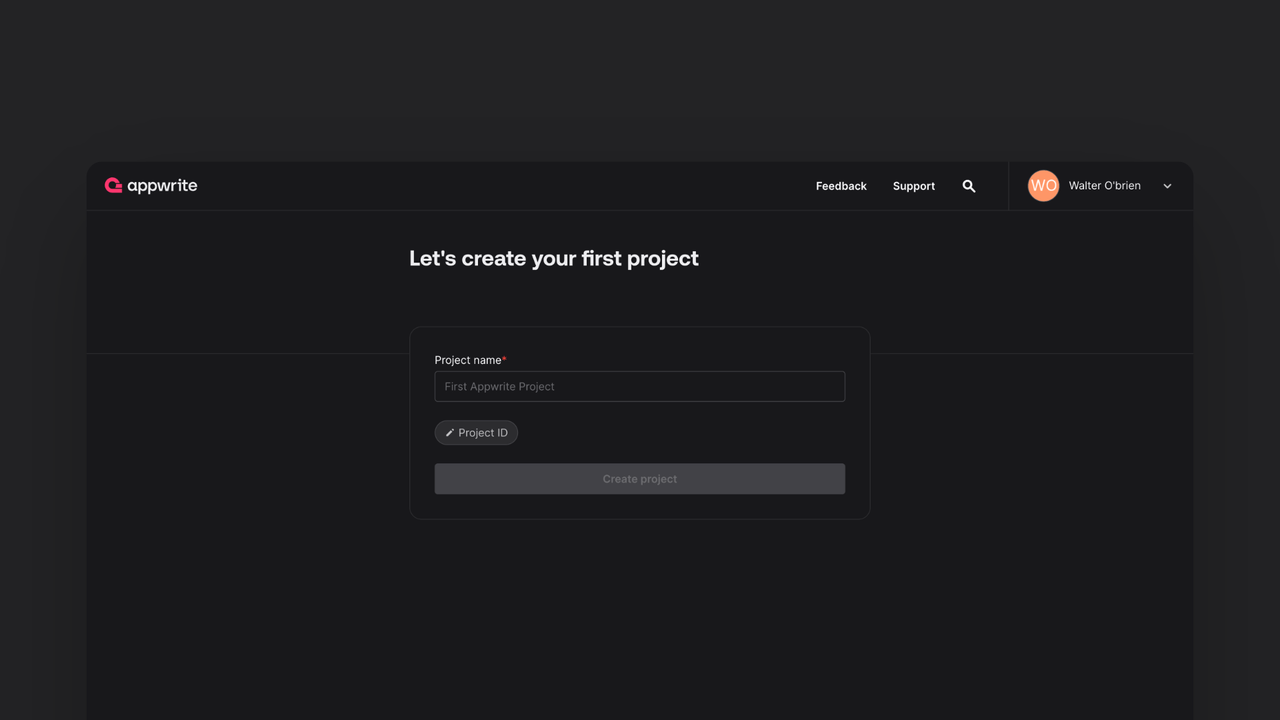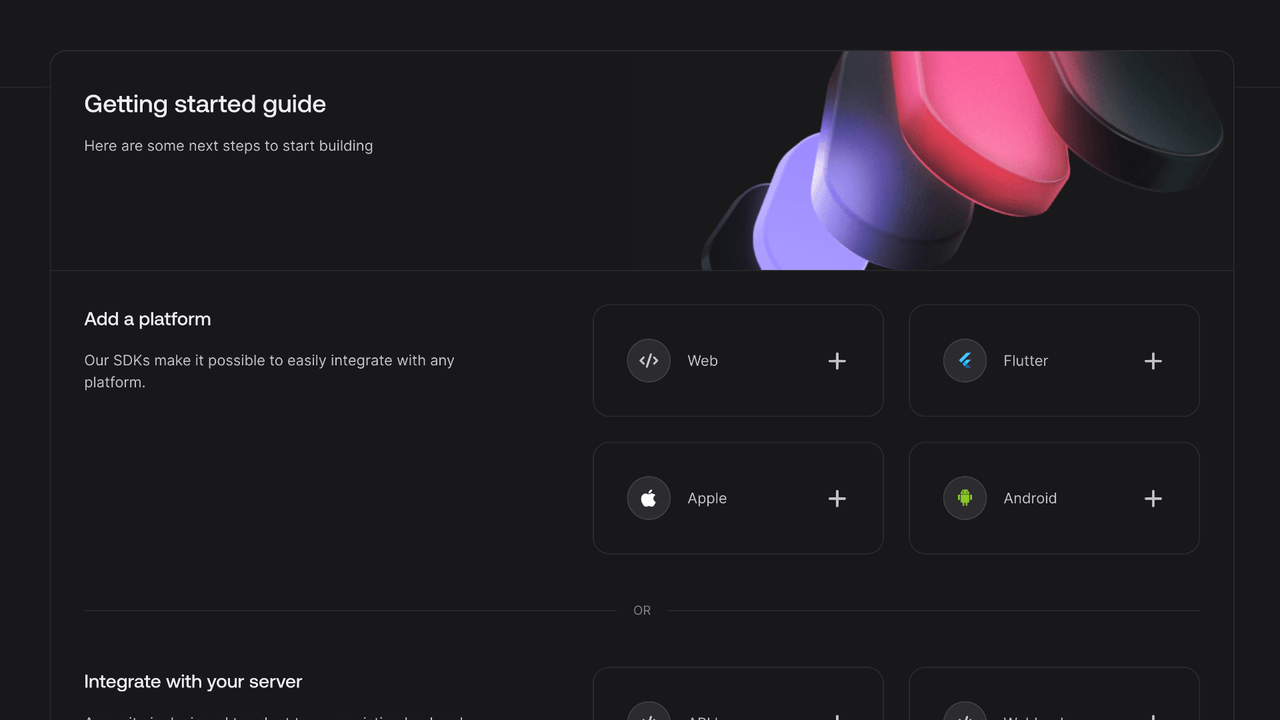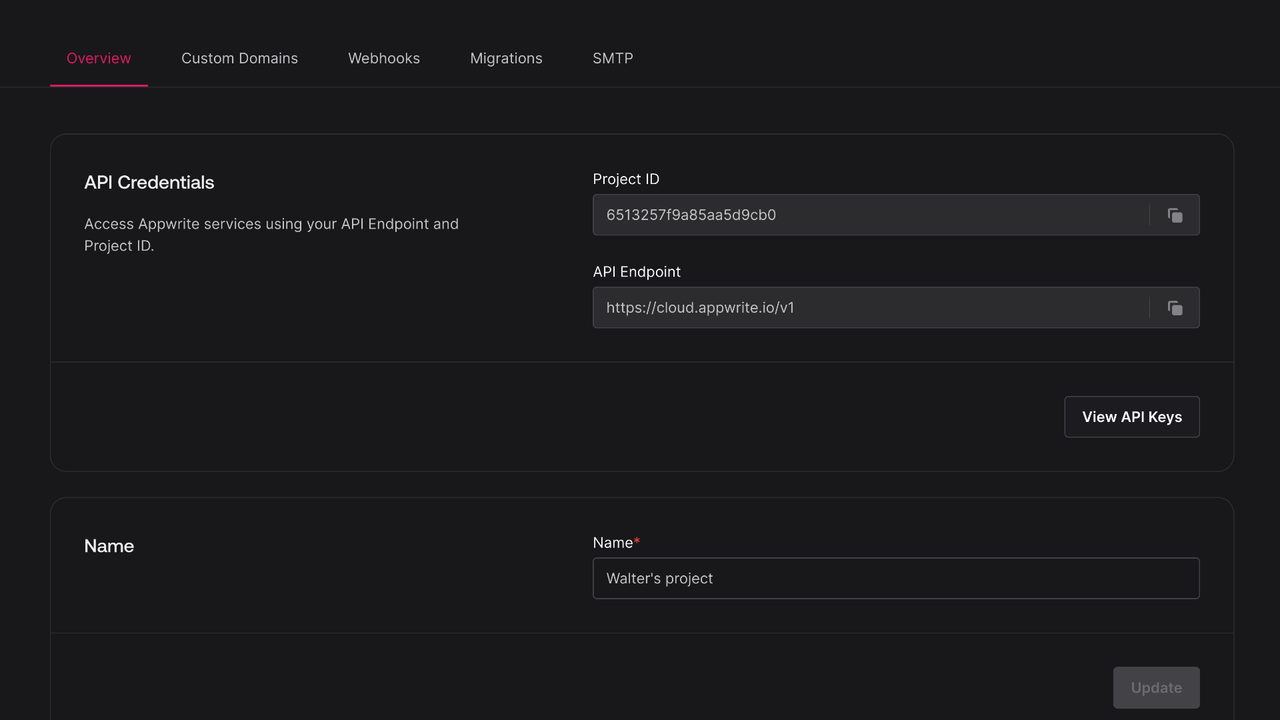Learn how to setup your first TanStack Start project powered by Appwrite.
Head to the Appwrite Console.


If this is your first time using Appwrite, create an account and create your first project.
Then, under Add a platform, add a Web app. The Hostname should be localhost.
Cross-Origin Resource Sharing (CORS)
Adding localhost as a platform lets your local app talk to Appwrite. For production, add your live domain to avoid CORS errors.
Learn more in our CORS error guide.


You can skip optional steps.
Create a TanStack Start project.
npm create @tanstack/start@latest my-app && cd my-app
Install the JavaScript Appwrite SDK.
npm install appwrite
Find your project's ID in the Settings page.


Create a new file src/utils/appwrite.ts and add the following code to it, replace <PROJECT_ID> with your project ID.
import { Client, Account, ID, Models } from 'appwrite';
export const client = new Client();
client
.setEndpoint('https://<REGION>.cloud.appwrite.io/v1')
.setProject('<PROJECT_ID>'); // Replace with your project ID
export const account = new Account(client);
export { ID };
export type { Models };
Create or update src/routes/index.tsx with the following code.
import { useState } from 'react';
import { createFileRoute } from '@tanstack/react-router';
import { account, ID, type Models } from '../utils/appwrite';
export const Route = createFileRoute('/')({
component: Index,
});
function Index() {
const [loggedInUser, setLoggedInUser] = useState<Models.User<Models.Preferences> | null>(null);
const [email, setEmail] = useState('');
const [password, setPassword] = useState('');
const [name, setName] = useState('');
async function login(email: string, password: string) {
await account.createEmailPasswordSession({
email,
password,
});
setLoggedInUser(await account.get());
}
async function register() {
await account.create({
userId: ID.unique(),
email,
password,
name,
});
await login(email, password);
}
async function logout() {
await account.deleteSession({ sessionId: 'current' });
setLoggedInUser(null);
}
if (loggedInUser) {
return (
<div>
<p>Logged in as {loggedInUser.name}</p>
<button type="button" onClick={logout}>
Logout
</button>
</div>
);
}
return (
<div>
<p>Not logged in</p>
<form>
<input
type="email"
placeholder="Email"
value={email}
onChange={(e) => setEmail(e.target.value)}
/>
<input
type="password"
placeholder="Password"
value={password}
onChange={(e) => setPassword(e.target.value)}
/>
<input
type="text"
placeholder="Name"
value={name}
onChange={(e) => setName(e.target.value)}
/>
<button type="button" onClick={() => login(email, password)}>
Login
</button>
<button type="button" onClick={register}>
Register
</button>
</form>
</div>
);
}
Run your project with npm run dev and open localhost on port 3000 in your browser.